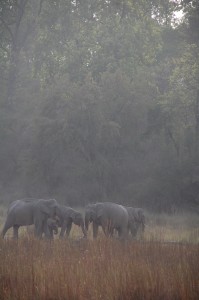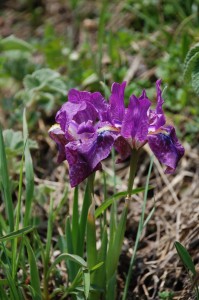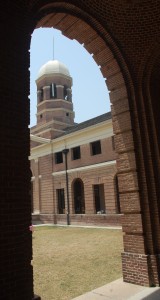Throughout our travels in India, talk of the monsoon has prevailed. This year, the summer in India was quite hot and dry, and the monsoon rains were two weeks late in reaching the parched North. In a country where a large amount of agricultural land is not irrigated, a late rain or below-average rain can spell disaster for the food supply, despite the incredibly productive soils of India.
The day after our return to Dehradun, the very first of the monsoon rainfalls occurred, stunning us with both its suddenness and force. Although I had heard stories about the intensity of rain during the monsoon, I had never witnessed it before. After a short, hard gust of hot wind, the drops started bouncing off of everything, booming on the tin roofs and puddles instantly began to form. Since then, these rain bursts have become more common, now happening in morning, afternoon, and during the nighttime. As the monsoon progresses, they will lengthen and become even more frequent until there are several days of constant rain. As suddenly as they appear, they will stop, leaving flowers and mud behind.
The change in the behaviour of the animals during monsoon is legendary, as shelter must be sought and flooding of habitats claims lives. Here at the Wildlife Institute, the wildlife reaction to the monsoon is dramatic as well.
Dotting the campus are large red-brown peaks of termite mounds, some reaching up to 1.5 m in height. Although I hadn’t seen any evidence of life in these mounds during the summer, the first monsoon rain brought on an impressive emigration of the reproductive caste, which are winged for dispersal. After a short flight, the reproductives land, bite their own wings off, and burrow into the nearest crevice. Most perish before they can establish a new colony, meeting a very different fate.
Walking to the mess hall past the street lamps, I could see clouds of awkwardly-flying termites, but sudden movement drew my eye to the ground. Frogs and toads had emerged from their underground lairs to dine, some so fat with termites that hopping was almost impossible. The next day, flocks of birds clustered around the base of the street lamps, where many of the reproductives had fallen, pecking delicately through the grass. Even the monkeys could be seen picking in the crevices of trees and in the underbrush for these tasty snacks.
Seeing such a mass emergence and the effects on the wildlife made me realize that perhaps humans are not the only ones who are happy to see the start of the monsoon.





